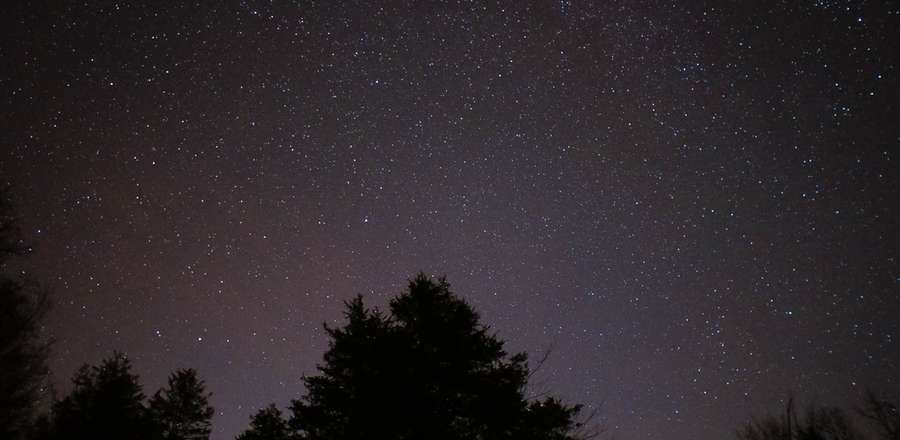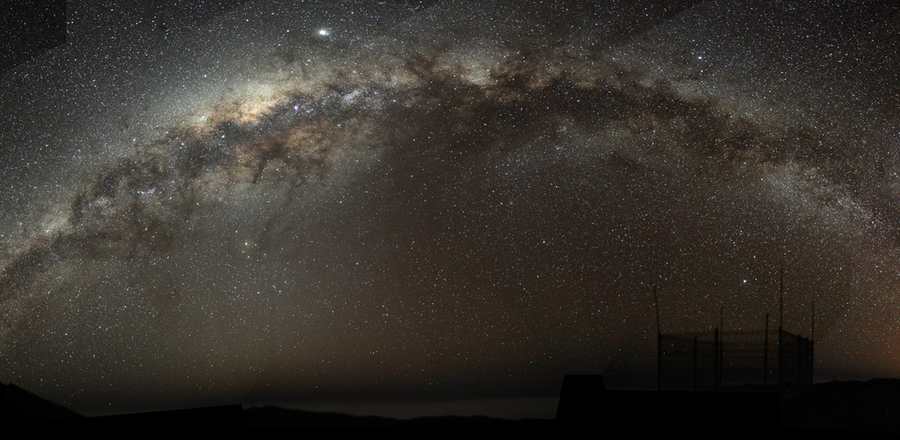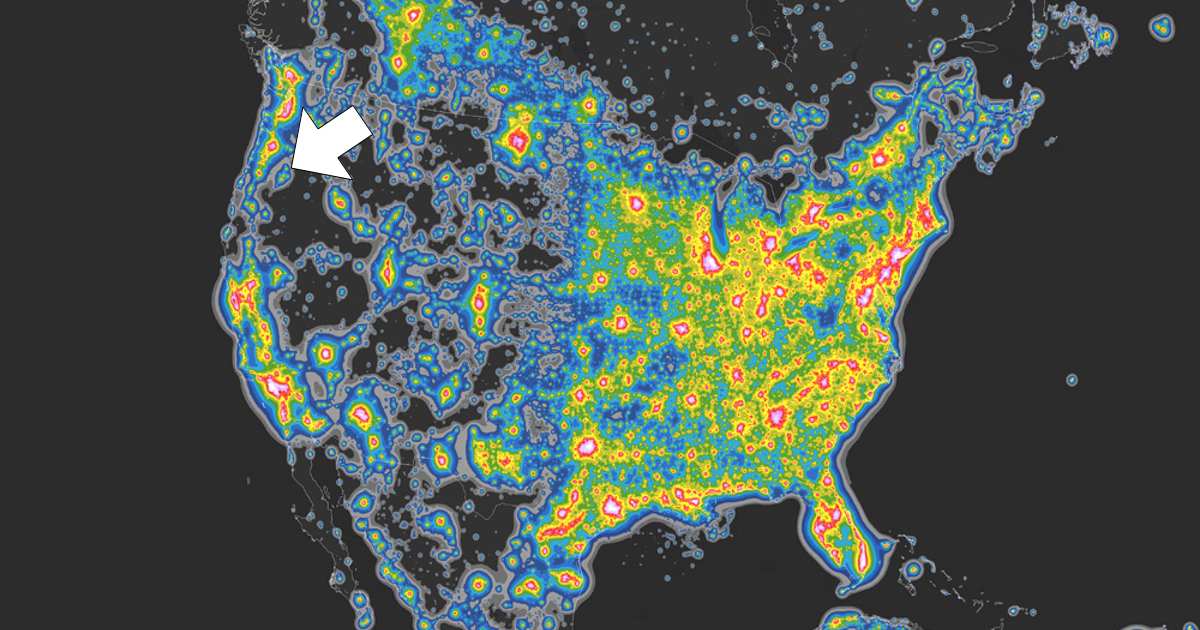Urban America can’t see the starry sky. It’s light pollution, and it’s a growing problem, scientists tell us. What if rural America is your last great chance to see the stars?
Rural scores a point?
I come from the city. It’s hard for me to see rural life as having cachet. Sure, The Pioneer Woman makes rural decorating seem trendy. Country air is nice. All in all, the city has everything else: culture, industry, innovation.
Yet, that’s not true. The city has everything except these billions of things: the night stars.
When I lived in the city, I didn’t think about the stars. The ones I saw were the fake peppered backgrounds in science fiction movies. The real stars? They weren’t visible. Above our heads was a dull night haze, like perennial cloud cover.
There was an observatory nearby. Maybe we’d go next weekend. Life went on without seeing stars.

Romance of the stars
Now, I live under a canopy of stars every night. I walk to our built-in observatory, our driveway. With my hands in my pockets, I’ll stare up at the sky and view a strong presence of stars.
I can do this now. I live in a rural town far outside the urban skyglow. (I’m where the arrow points on the satellite image above.)
Rural America can be flat. Hilly. Dusty. Wooded. Or plain. But, I’ve come to understand every rural community has a view. People can look up at night. See an amazing display of stars. It’s where the cheapest plot of land rivals a city penthouse view.
I live in a rural town far outside the urban skyglow.
There’s something soothing about seeing stars, comforting. It makes you recollect when you last saw them this vividly. Probably a camping trip when I was young. Or, a wooded cabin. Starry vistas make an impression on you as a kid. Not in a science-fiction way, not for me. It expanded my imagination.
I’m not the type to wonder about life on other planets. (Isn’t there enough life in the seas we haven’t yet discovered?” What makes me daydream while looking at stars is who made them. What do these stars look like up-close? The spectrum of color is unlike anything we’ve seen. When you stare at a faraway starfield, you’re hit with what vastness really is. There’s nothing to compare. Not the deepest ocean, nor the tallest mountain.
It’s where the cheapest pot of land rivals a city penthouse view.
Here’s where a telescope on the deck really has a purpose.

What we’re seeing (or missing)
The stars we see are in the Milky Way galaxy. The galaxy that our solar system is located in. According to our friends at Wikipedia, Milky Way is Latin for “milky circle.” It’s all that was recognized for a long time, a faint band of light. The band was found to be made up of planets in 1610, by Galileo.
More from Wikipedia:
"The Milky Way is a barred spiral galaxy with a diameter between 100,000 light-ears and 180,000 light-years. The Milky Way is estimated to contain 100-400 billion stars.
If you think about it, we’re traveling on a vessel. (Traveling in a circle, but still.) Those who can see the stars, they’re staring at the prow of the ship, so to speak. Those who cant’ see the stars are at the stern. The first group gets a view of what’s really going on. What’s out there. The other group can easily forget.

Light pollution is a thing
We may think stars are nice. A nice-to-have thing. Except, scientists tell us it’s more serious. They tell us, light that blocks the stars is a form of pollution. It’s not just a nuisance. They’re labeling excessive light garbage!
We’re told that 80% of the world is blanketed in light pollution. Four of five people are having their lives impacted by this. And not just humans. The impact extends to wildlife, the climate, and our atmosphere.
Here’s how they say it’s affecting things:
Sleep patterns

Human bodies follow a circadian sleep rhythm. It regulates when we’re tired and awake. We help the rhythm along when we introduce darkness into our environment. It releases melatonin in our bodies. We get a good night’s sleep With brighter nights found in urban areas, that cycle is being interrupted.
The big culprit? LED street lamps shine through your bedroom window. Those popular low-energy bulbs inhibit sleep patterns up to five times greater than old street lights. (It’s the blue light in them.)
Experts connect a lack of proper sleep to various health issues …
Experts connect a lack of proper sleep to various health issues from obesity, depression, diabetes, and even forms of cancer. If you don’t get a good night’s sleep in the city, it might not just be from the noise.
Wildlife habitats
Various species rely on darkness or moonlight. The benefits include mating and gestational cycles, to navigation. Now, these types of wildlife are fading their fine-tuned systems harmed by artificial light:
- Coral
- Wallabies
- Fireflies
- Moths
- Migrating birds
- Sea turtles
Up to a billion birds are killed, per year, by disorienting city lights.
There are many possible takeaways here. #1, this is another form of pollution that humans are responsible to fix. And #2, if tiny creatures can be affected so greatly, imagine what urban light bleed is doing to our human systems?
Environment and climate
Not a greenhouse gases debate, this research questions the effect of human light on the earth:
- Light pollution may prevent the normal reduction in atmospheric smog
- Light pollution may be triggering early springtimes in cities
- A time may come when we view light pollution the way we do sludge being dumped into rivers.
Economic waste
You may be asking, what do disoriented fireflies have to do with daily life?
It’s expensive to keep all these lights on. An article at Vox points out, up to 40% of a city’s electric bill can go to street lighting. Urban taxes are the highest in the country. This cost isn’t helping.
Human problems work like this. We spend an excess of money to negatively impact our world.
Back to the stars
This rundown about light pollution offers context. We’ve lost the stars and gained a headache.
We’ve lost the stars and gained a headache.
Think about the reevaluation we’ve made in our modern lives. Everything from diet, consumerism, gas-guzzling cars, to our impact on the physical environment. Light pollution is next. People are doing analysis about their living environment. Not only what it has. What it lacks.
What kind of environment do you want to live in? What does change look like?
What kind of environment do you want to live in? What does change look like? How much do we dare change/ This subject of start skies is a big symbol to that end.
For example, many of us feel sad for children who have never seen snow or the ocean. But stars? There are millions of kids in that situation. If they don’t see stars, what else do they not see? Rivers? Forests? Wildflowers? Insects?
On tipping points

Moving to a rural community is a radical change for an urban person. The decision to go isn’t about any one thing. Costs. Pace. Nature. For an urbanite, it’s often about a bunch of little things.
One small thing could be, I want my kids to see the stars at night. “By the time they’re my age, there may not be a lot of places left to see them.” A real possibility. At least, where you could practically live and work.
One small thing could be, I want my kids to see the stars at night.
Where I live now, there are no street lights. Nothing shines in my window at night. Except, the moon on occasion.
We may well lose the stars
If construction, development, and urban sprawl continue at their current pace, we could lose the stars. Where I live, there is some light pollution. Just not that much, yet.
Eat your vegetables. Go look at the stars. It isn’t some guilt thing. Scientists are telling us, light pollution is a real problem. More than just aesthetics. It affects our bodies, our wildlife, our climate, our planet.
Major cities are trying to turn things around. By removing LED bulbs with a blue light spectrum. By dimming lights. Going dark late a night. It should help with light pollution. It won’t bring back the stars, not there.
The only surefire way is to move to a rural community. They’re here every night.
For that, you’ll need to become like an astronomer. Observatories are now situated far away from city limits. As well, dedicated dark zones have become popular. Areas where lights are not allowed shine at night.
Through the stars, we’re becoming aware of this problem of disconnectedness from our natural world. The more you read, the more you see it’s a long-term project. They’re trying to bring stars back into your urban life. The only surefire way is to move to a rural community. They’re here every night.
Leave a comment
When was the last time you saw the stars? Really saw them vividly? How close to nature do you live in currently? Is it close enough?





